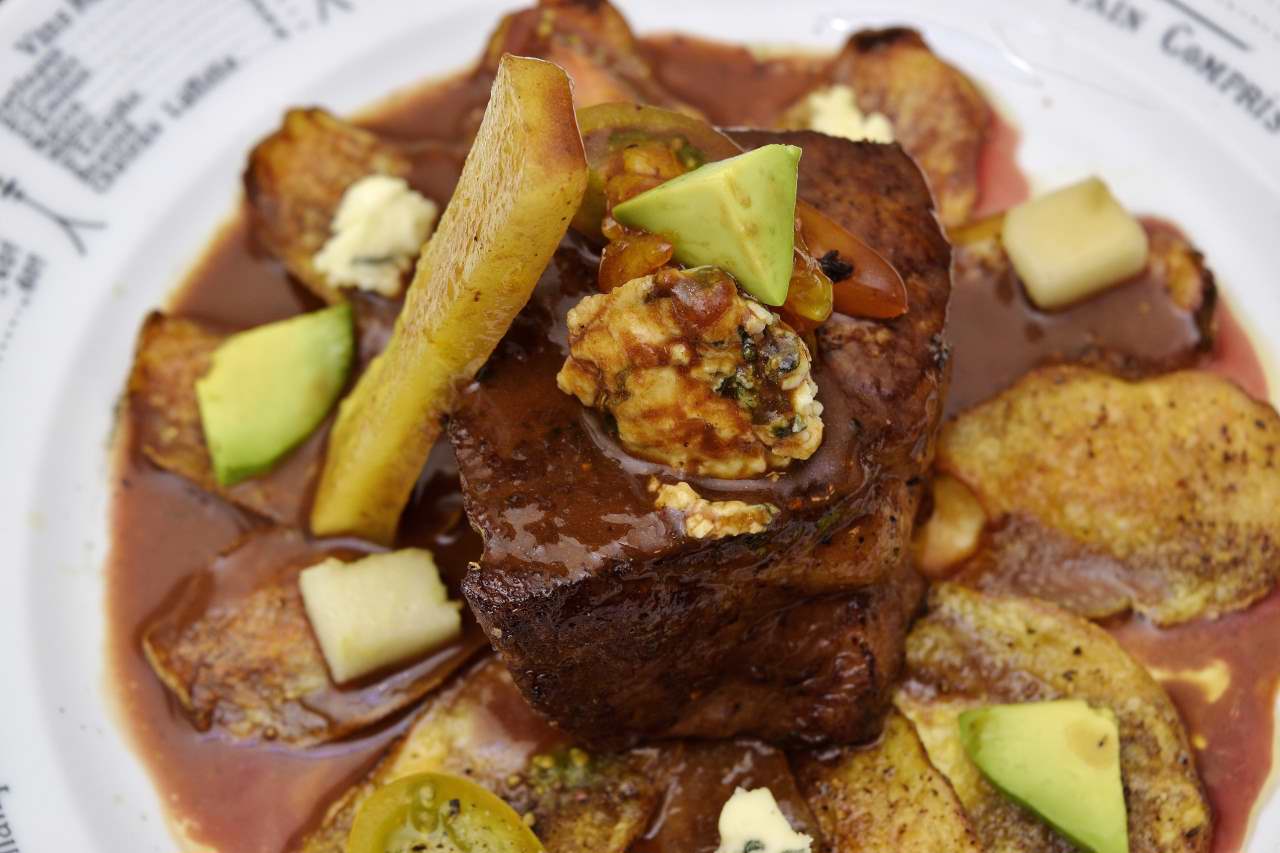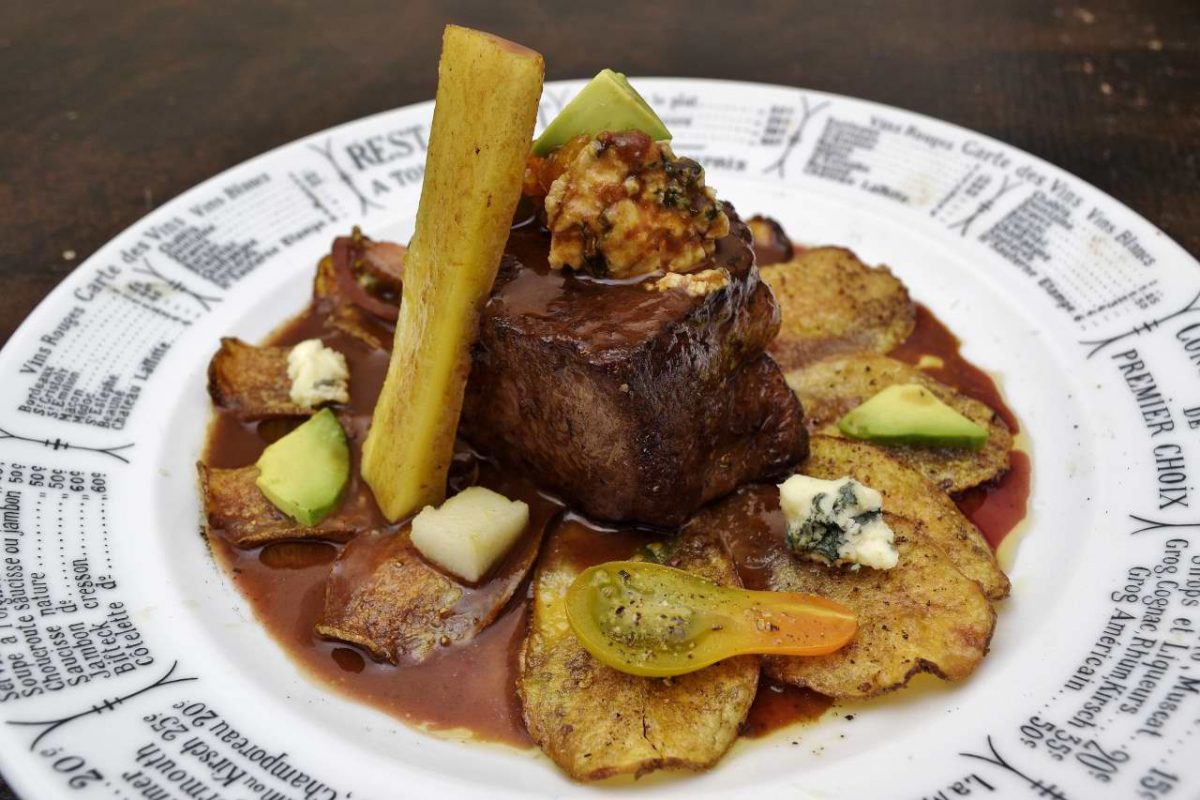Serves 2-4
Level of difficulty 3.25
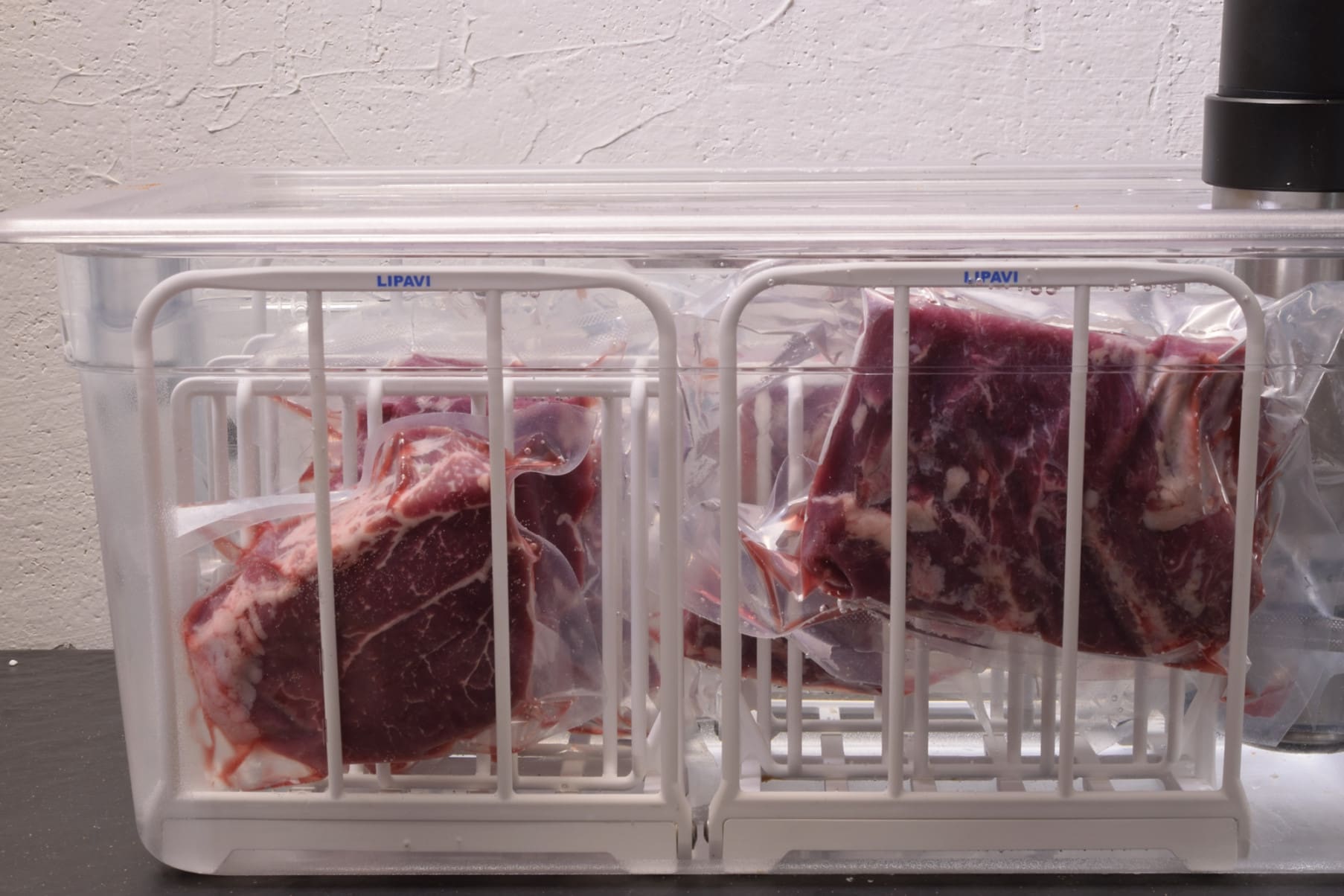
How do you like your Filet?
Here are some basic temperature setting guidelines for appearance of doneness:
Rare: 129 F/54 C.
Medium rare: 132 F/55 C
Medium: 137 F/58 C.
Medium well: 145 F/63 C.
Well done: 150+ F/65+ C.
The Norwood Method:
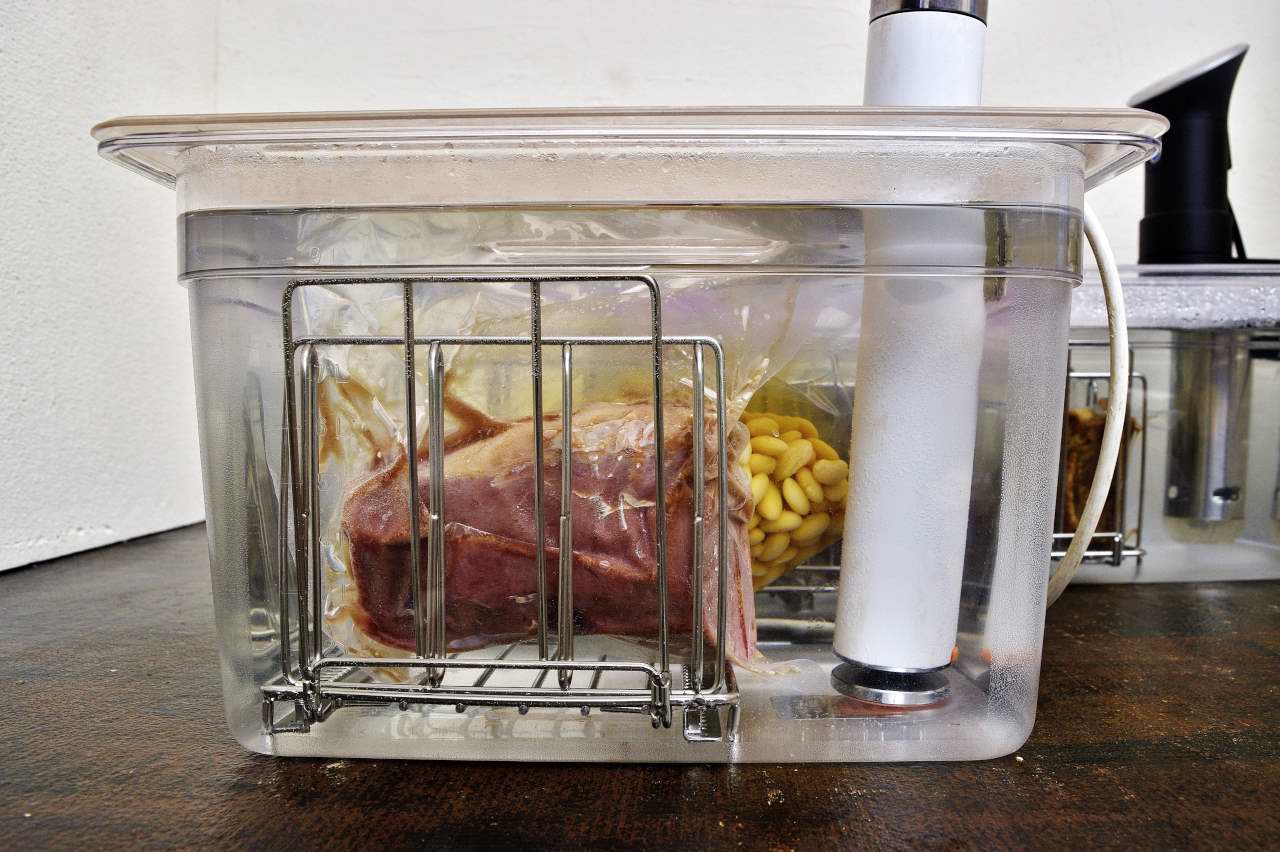
The Norwood Method prescribes that you preheat the sous vide bath to the HIGHEST temperature you intend to use–let’s say 183 F/84 C in the case of the most root vegetables like carrots and potatoes. These vegetables require this elevated temperature.
We are aware that in the case of proteins, temperature determines appearance of doneness–not time. We want to process several steaks with several different appearances of doneness. We want to avoid staging steaks out and back into the bath as much as possible. When we are done, we want everything to be in the tank for the sake of simplicity and our convenience. There has to be a way!
Ice and water can be used to reduce the temperature to a level more appropriate for steaks. We planned ahead so we left some room between the water line and the top of the vessel when we started the beans–the pouch must stay fully submerged at all times.
We want our first steak to appear “medium well,” so we use 145 F/63 C. The steak must be processed for a minimum of two hours in order to achieve the desired internal temperature.
We want the next steak to appear “medium”–let’s say 137 F/58 C. We add ice/cold water to the vessel until we achieve the updated temperature. Remove water intermittently as needed. This steak is also processed for a minimum of two hours. Those extra two hours at 134 F/57 C will not damage the steak that we processed at the higher temperature. There will be no detectable difference in that steak, even if it stays in the tank as many as 8 more hours because the temperatures are so low.
Finally, we want to process one more steak to appear very rare–let’s say 127 F/53 C. Again, we add ice/cold water to achieve the new temperature. We process the rare steak–the LAST steak–again, and always for at least two hours–three hours if it was frozen.
Even though carrots and potatoes will stop cooking when we start processing the steaks, the lowest temperature we plan to use is still “safe.” After all the steaks are processed the temperature is raised to 183 F/84 C and the vegetables start cooking again if necessary. The Norwood method!
Procedure:
Make Stovetop Espagnole Sauce. Note: This sauce requires 2-3 hours to be created. It can be made in advance and refrigerated. If desired, or if you just don’t have the time there are proprietary packaged versions. I recommend Knorr Brown Gravy/Demi-glace.
When you fill the sous vide vessel with water, leave approximately 4″/10 cm of space between the water line and the top of the container so that you can add cold water after processing the parsnip.
Preheat the sous vide bath to
183 F/84 C.
Peel the parsnip as you would a carrot and cut it in half. Stage into a dedicated vacuum bag. Seal and process for 1 hour. Cold shock in iced water until the package achieves 70 F/21 C, refrigerate at 40 F/4 C until needed. If desired, this can be done up to 3 days in advance.
Add ice/water to the bath until it achieves the temperature you chose from the appearance of doneness chart above. For this model, we used
127 F/53 C.
Stage the tenderloin roast into a dedicated vacuum bag. Seal and sous vide process at the preferred temperature for 2-6 hours, whatever is more convenient for you. If the roast is frozen, add one hour to the processing time.
Make the Pommes Maxim:
Preheat the oven to 350 F/176 C. Melt 2 oz/60 g of butter. Peel the potatoes and slice lengthwise as thin as possible, just thick enough to hold together.
Dip the potatoes in the butter and arrange on the silicone mat or non stick pan. You can lay them out flat like in this picture:
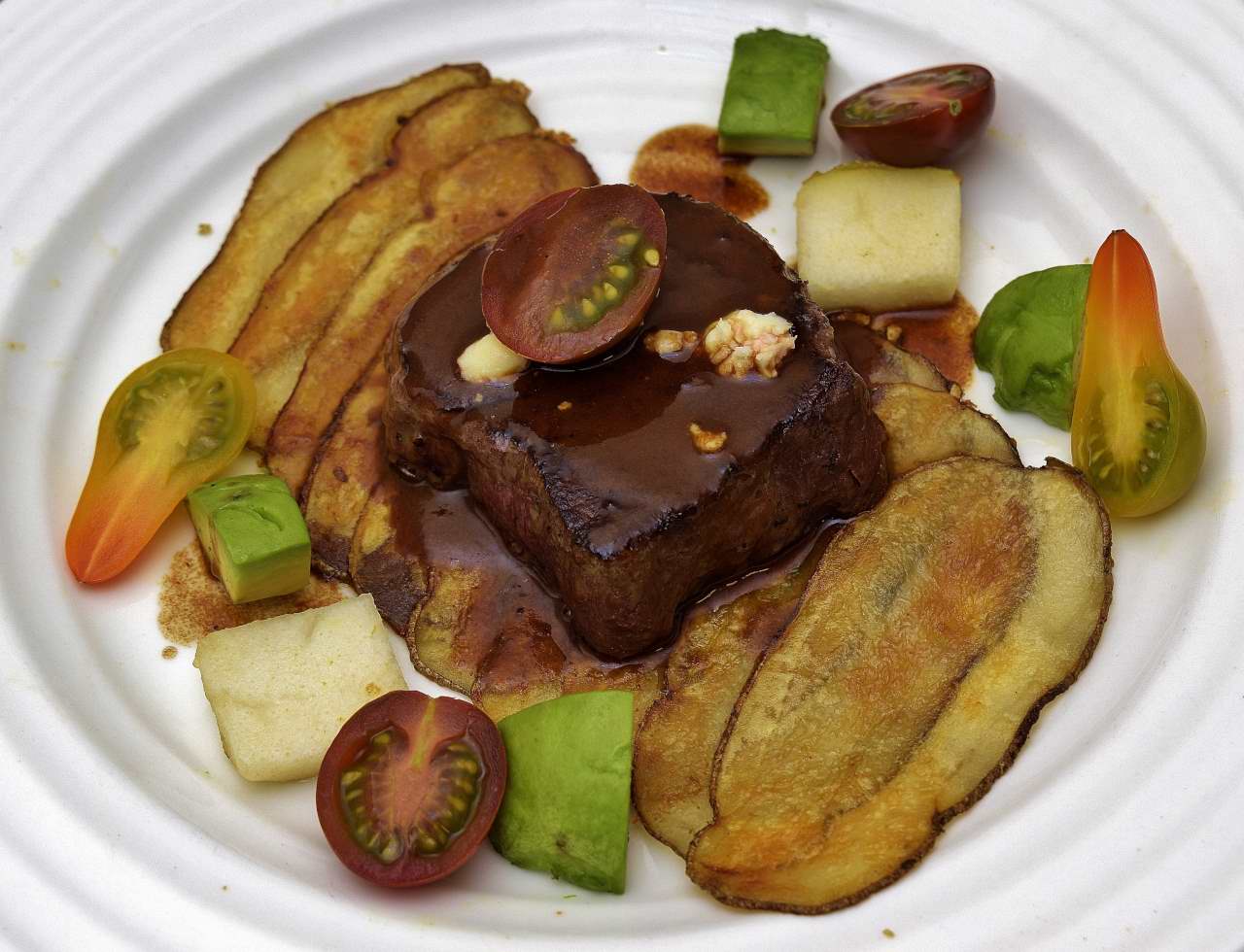
or in a circular pattern like this:
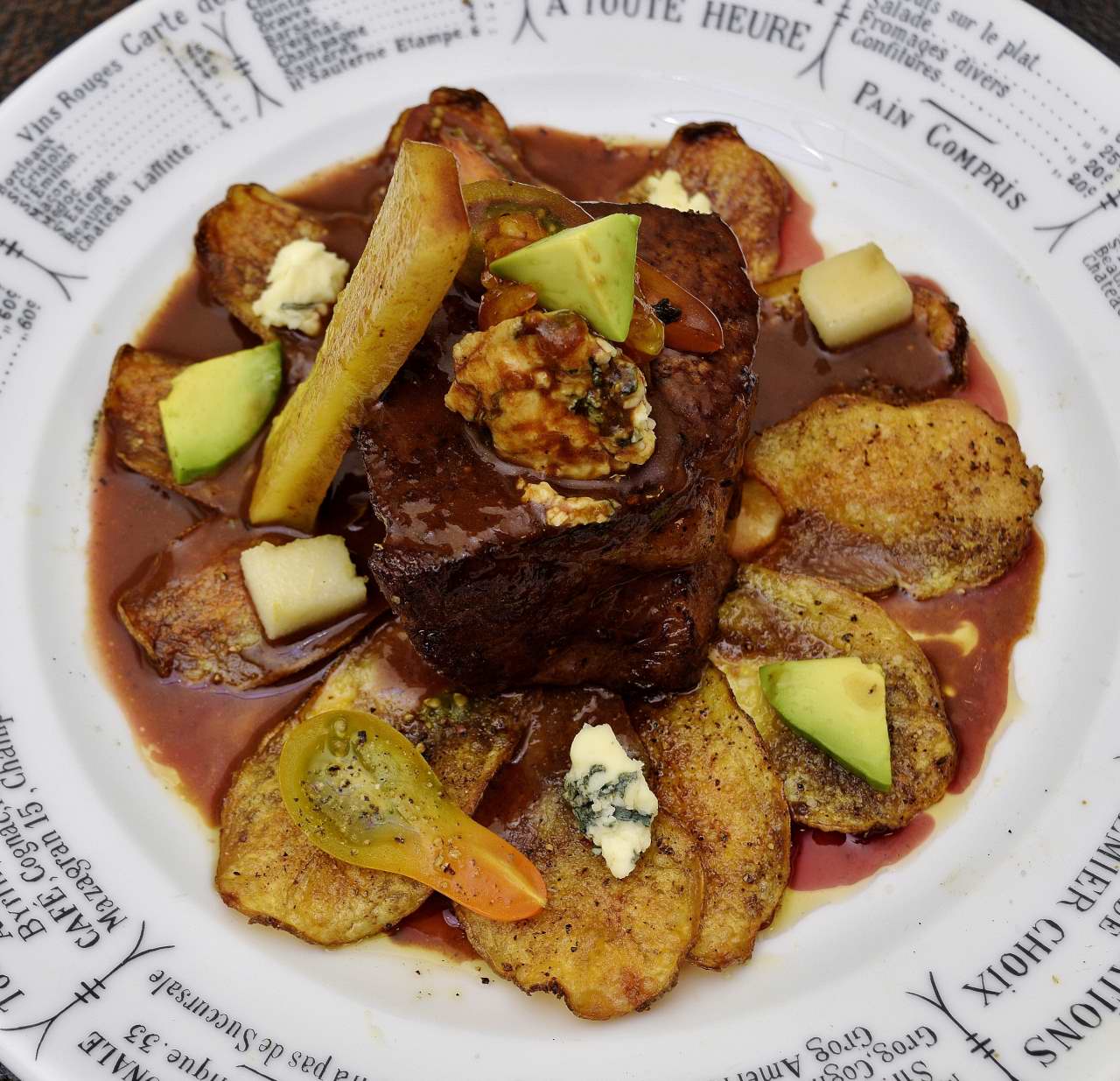
Sprinkle with salt and pepper and bake/roast until brown and crispy. Allow to cool somewhat before carefully sliding the potatoes out on a heated plate. Lower the temperature in the oven to 170 F/77 C.
While you wait for the oven to cool off a little, take the parsnip out of the bag and cut it into long slender shapes–I used a “plank” model, but long wedges work too. If you make sure the bottom is very square, the parsnip can be stood up and leaned against the filet.
Cut the avocado in half, remove the skin, and cut small pieces to decorate the plate–squeeze a little lemon juice on them so they keep the color and put them in a bowl or on a small plate. Peel the pear and cut it into small uniform pieces, set aside with the avocado. Cut the tomatoes in half or quarters and put together with the pear and avocado. Sprinkle everything with a pinch of salt and pepper.
Bring the wine to a boil in a small skillet and reduce to almost nothing. Wine adds flavor to sauces–not volume. Add the Stovetop Espagnole Sauce or equivalent to the pan and bring just to a boil. Reduce heat and add 1 oz/30 g of cold butter. Stick a fork in the butter and move it around the pan as it melts. It will emulsify with the sauce. Do not boil again. Stage into a squirt bottle. Set aside.
Put the plates with the potatoes in the warming oven. Remove the tenderloin roast from the bath and open the bag. Drain the juices and discard or save for later processing–there won’t be much. Cut the tenderloin into 3-4 steaks. I cut them in various sizes to accommodate smaller appetites, etc.. Sprinkle with kosher salt and pepper and coat with a few drops of oil. Heat the skillet to 300 F/150 C. and sear the steaks–about thirty seconds on each side. Do not crowd them in the pan–it is best to just do one at a time and repeat.
Reduce heat and add the parsnip shapes to the saute pan with a few drops of butter to heat. Sprinkle with salt and pepper. Add the orange marmalade to the pan to coat the parsnip. Turn off the burner.
Remove the plates from the warming oven and set on a counter. Arrange the tomatoes, avocado and pear on the plates. Add a few tiny crumbles of blue cheese. Put the steaks in the middle of the plate and top with more blue cheese, a half tomato, avocado, etc. Lean the parsnip on the filet–my wife doesn’t like parsnips, so one of the presentations is “sans panais.”
Drizzle with the wine sauce and serve.

The steak above was cut to 4.5 oz/130 g. The steak below was cut to 7.5 oz/210 g.

What’s not to love? I really feel sorry for vegans! (kidding).

The money shot–as always, the appearance of doneness is uniform throughout the steak. This is very difficult to achieve by traditional means.

Who puts avocados and pears on the same plate with a steak? WE DO! Pears are a great companion for Roquefort cheese.
